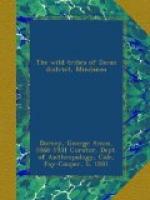FIG. 31A AND B. FRONT AND BACK OF AN OBLONG SHIELD.
FIG. 32A AND B.
A.—FRONT OF A DECORATED SHIELD.
B.—BACK OF SHIELD A.
Hostile raids against the neighboring Bila-an, Tagakaolo, and Ata seem to have been common from the most ancient times. After the arrival of the Spaniards there were many minor conflicts with the Moro, and the tribal history takes note of several serious feuds between Bagobo villages. Single warriors, usually those desiring to become magani, sometimes enter hostile territory and there lie in wait for an opportunity to spear a passing foe. The fact that these attacks are frequently from ambush, or that whole families are slain while asleep on the floors of their houses, does not seem to detract in the least from the honor due for the deed. Generally, parties of sixty or more, under the direction of a magani, are made up to avenge the death of their townspeople, to secure loot and slaves, or to win glory and distinction. An ambush is formed near to a hostile village and just at dawn an attack is made on the early risers who are scattered and unprepared. The invaders are usually satisfied with a few victims and then make their escape. Women and children are either killed or are carried away as slaves. It is customary for all the warriors to make at least one cut in the bodies, and to eat a portion of the livers of enemies who have shown great bravery, for in this way it is thought they gain in that quality. This seems to be the only occasion when human flesh is tasted, despite the fact that the members of this tribe have been frequently referred to as cannibals.
The warriors of Cibolan and Malilla formerly carried heads of enemies to their towns and made use of them during the GinEm ceremony, while at Bansalan and Digos a lock of hair, cut from the head of the slain, answered the same purpose. Individual raiders sometimes carry home a head or a hand as evidence of a successful fight, and at such times festivals may be held to celebrate the event. However, the trophy soon loses its value and is hung or buried at a distance from the village. Head-hunting for the sake of the trophy itself, does not exist here.




